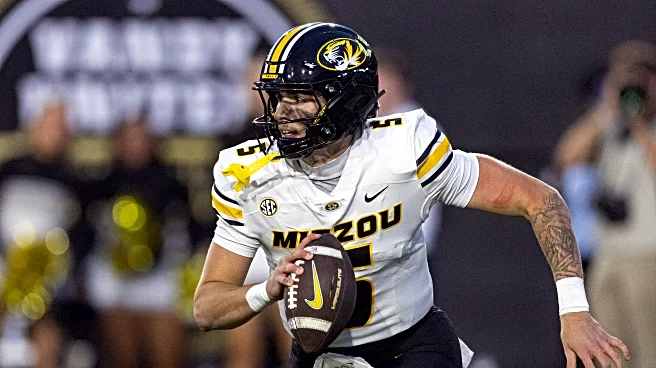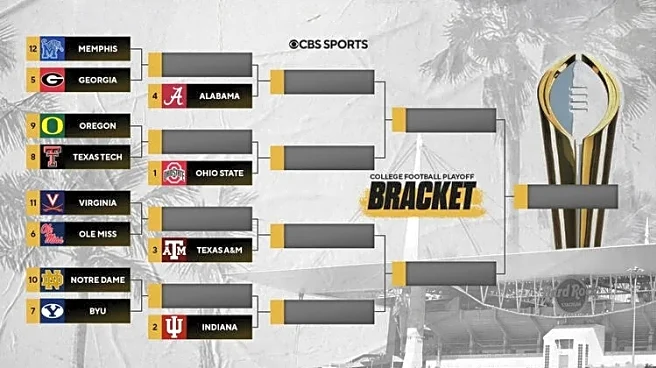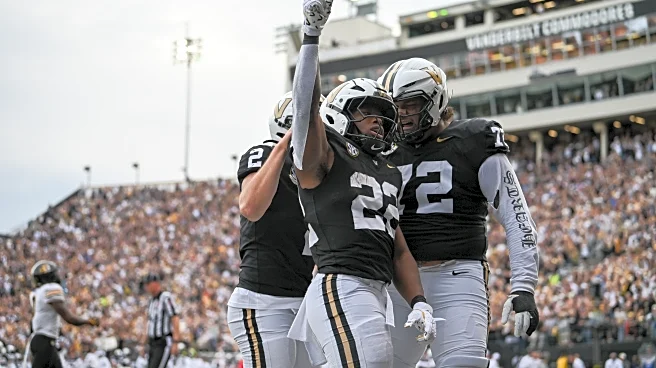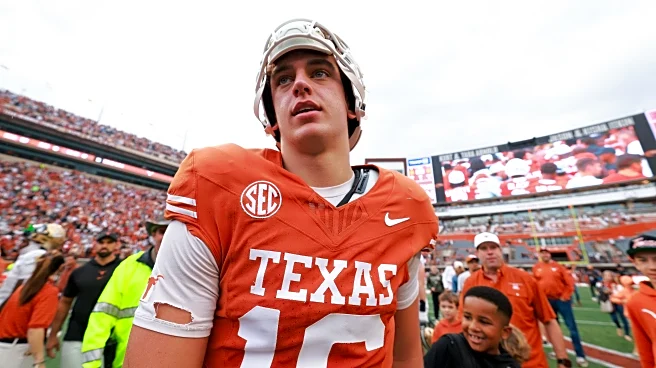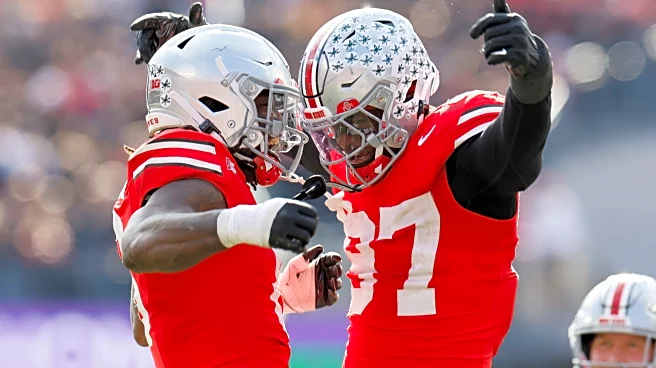What's Happening?
The Southeastern Conference (SEC) continues to lead college football TV ratings through Week 10 of the 2025 season. According to Nielsen Big Data + Panel metrics, SEC teams occupy seven of the top ten
most-watched slots, showcasing the conference's dominance in viewership. Alabama tops the list with an average viewership of 7.91 million, followed by Georgia at 7.63 million and Tennessee at 7.03 million. Texas ranks fourth with 6.48 million viewers, driven by interest in Arch Manning's performance. Ohio State, outside the SEC, rounds out the top five with 6.26 million viewers. The ratings are bolstered by key matchups aired on major networks like ABC and ESPN, although a carriage dispute between Disney and YouTube TV poses a threat to continued viewership growth.
Why It's Important?
The SEC's dominance in TV ratings underscores its significant influence in college football, impacting media rights negotiations and advertising revenues. High viewership numbers translate into lucrative deals for networks and increased exposure for the teams involved. This dominance also affects recruitment, as players are drawn to programs with high visibility. The ongoing carriage dispute between Disney and YouTube TV could disrupt this trend, potentially affecting fan access to games and altering viewership patterns. The SEC's strong ratings position it as a key player in shaping the future of college football broadcasting and marketing strategies.
What's Next?
As the college football season progresses towards the playoffs, the SEC is expected to maintain its strong viewership, especially with high-stakes games on the horizon. The resolution of the Disney-YouTube TV dispute will be crucial in determining future ratings, as prolonged blackouts could shift viewership to other platforms. Networks and advertisers will closely monitor these developments to adjust their strategies accordingly. The SEC's continued dominance may also influence future conference realignments and media rights negotiations, as other conferences seek to emulate its success.
Beyond the Headlines
The SEC's viewership dominance highlights broader cultural and economic trends in U.S. sports. It reflects the regional passion for college football in the South and the economic impact of sports on local communities. The conference's success may drive further investment in facilities and recruitment, enhancing its competitive edge. Additionally, the carriage dispute raises questions about the future of sports broadcasting, as streaming services increasingly challenge traditional cable networks. This shift could lead to changes in how fans access and engage with sports content.


